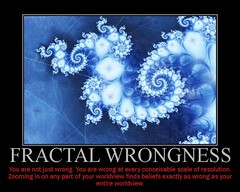Our series on plotting is a perennial favorite on the blog, so we’re expanding on that series with a few guest posts! Ali introduced me to Save The Cat! and I really loved using it on my most recent manuscript, so she’s here this week to explain the basics of this plotting method and how to use a beat board.
By Ali Cross
Used with permission from this post
I use a corkboard, (but you can use a wall, or whatever) and a stack of index cards (or sticky notes). My crit group just gave me a new package of index cards–they know me so well! Thanks guys!
Don’t freak out over the size or color of your cards. Just use whatever. You can use colored pens if you want (I usually only use colored pens if I’m beating out a story with multiple points of view–each main character gets their own color.)
Now, using a couple strips of masking tape, divide your corkboard (or whatever) into four even sections (three strips of tape.) This denotes Act I, Act II part one, Act II part two, Act III.
It should look like this:
| ACT I |
| ACT II part one |
| ACT II part two |
| ACT III |
Now, get out your beat sheet and your index cards.
On your first card, jot down your notes for the Opening Image. Tack it/tape it/whatever right at the beginning of your Act I section.
Your next card is #6 on the Beat Sheet; the Break into Two card. Place it at the very end of the Act I section.
Next, #7, B Story, at the beginning of the Act II, part one, followed by #9, Midpoint, at the end of that section.
#10, Bad Guys Close In, goes at the beginning of the second Act II, followed by #13, Break Into Three.
Your last section starts with #14, Finale, and finishes with #15, Closing Image.
Now, fill out your cards for the remaining beats and tack them to your board where they belong. You’ve probably got some scenes in your head, so jot them down on a card and figure out where they belong. Your beat sheet should give you a pretty clear idea where it goes on the storyboard. Go ahead and stick your cards up there.
Action scenes, or beats that involve multiple scenes to play out, get stuck to the board in cascading groups. You can see what I mean in the photo of my board:
It’s easy to see where the holes are, but I’m not worried. In fact, I’m kind of happy about it. This outline keeps me in line by pinning down the beginning, middle and end, but allows me the freedom to work out all that fun middle stuff.
If I get an idea for a scene I can write some notes on it and add it where it belongs. That way, I’ll know exactly where to add that scene once I catch up to it. And when I’m sitting there, all out of Mike ‘n Ikes, my mouth hanging open as my gears try to get the writing going, I can look at the board and know what I’m supposed to work on next.
Whew! That was a lot of info! If you have any questions, feel free to ask them in the comments and I’ll do my best to answer in there.
About the author
 Ali Cross is the sensei of the writer’s dojo where she holds a black belt in awesome. She lives in Utah with her kickin’ husband, two sparring sons, one ninja cat, two sumo dogs and four zen turtles.
Ali Cross is the sensei of the writer’s dojo where she holds a black belt in awesome. She lives in Utah with her kickin’ husband, two sparring sons, one ninja cat, two sumo dogs and four zen turtles.
She’s the author the young adult urban fantasy series Desolation, and a member of the Author’s Incognito Executive Committee.
Blog | Facebook | Twitter



 The first step in the
The first step in the 
 In step four, we come back to our plot summary and expand each sentence from that paragraph into a paragraph of its own, making the summary roughly a page, too.
In step four, we come back to our plot summary and expand each sentence from that paragraph into a paragraph of its own, making the summary roughly a page, too.
